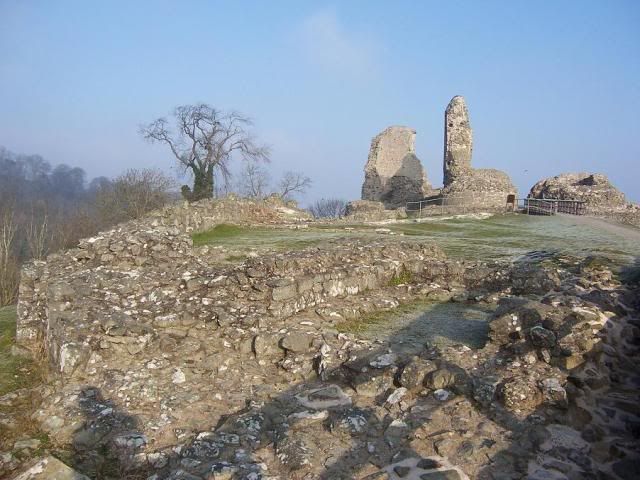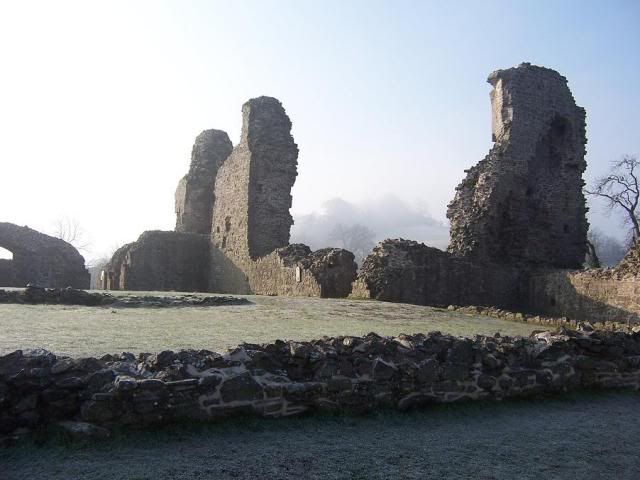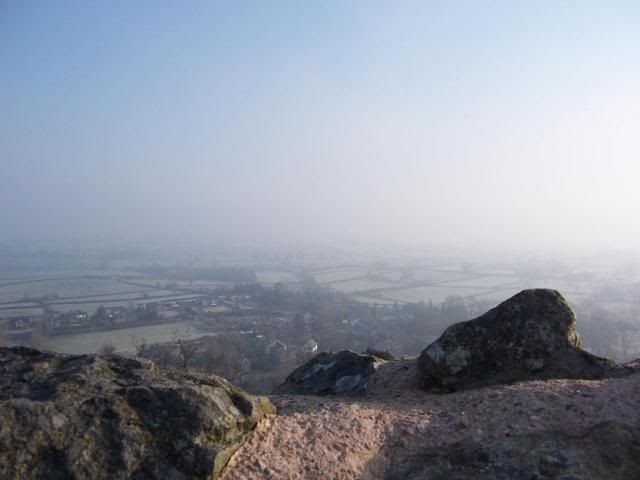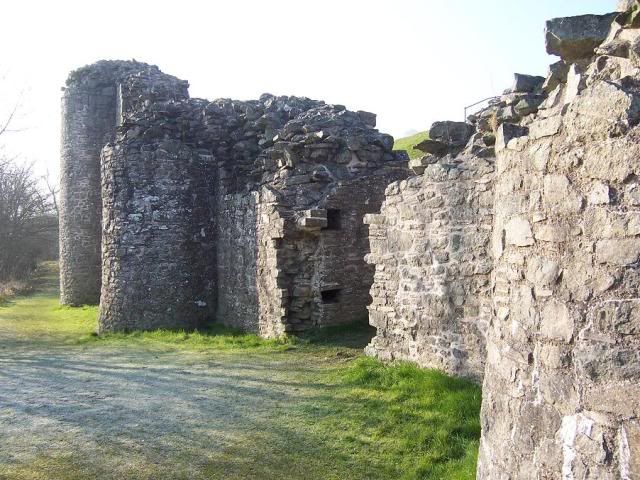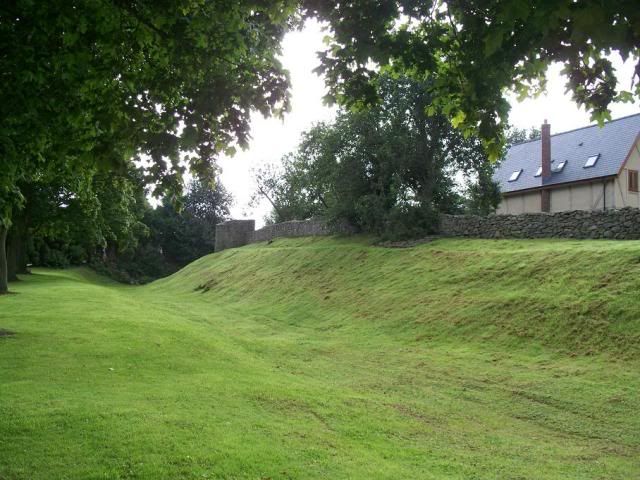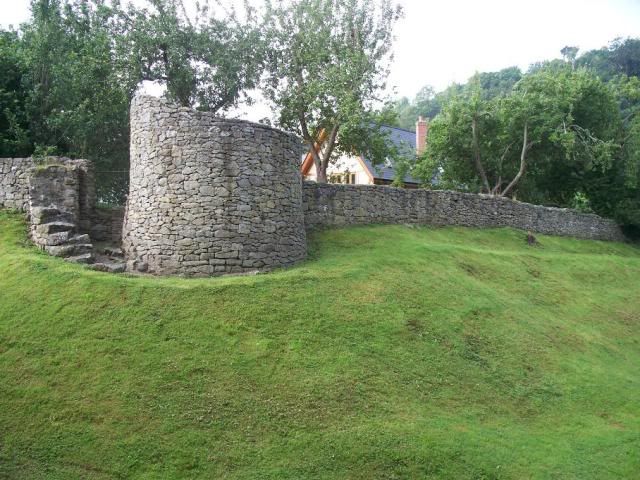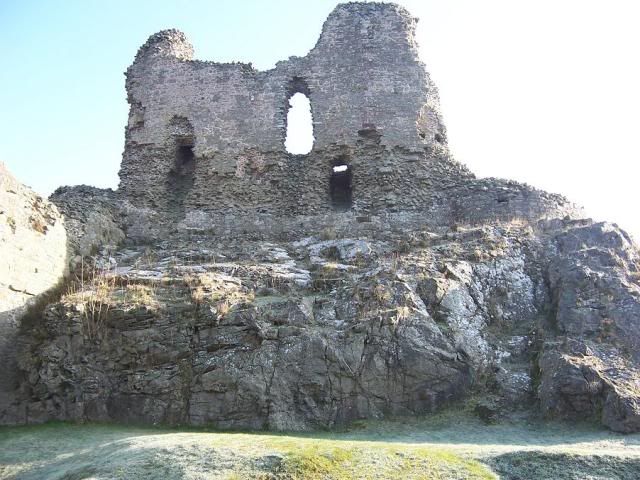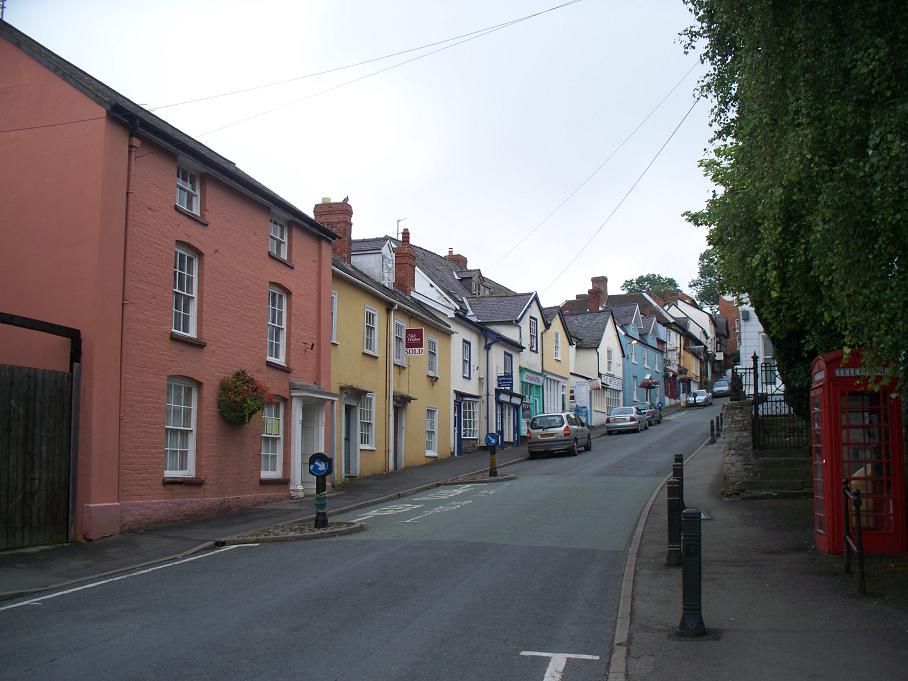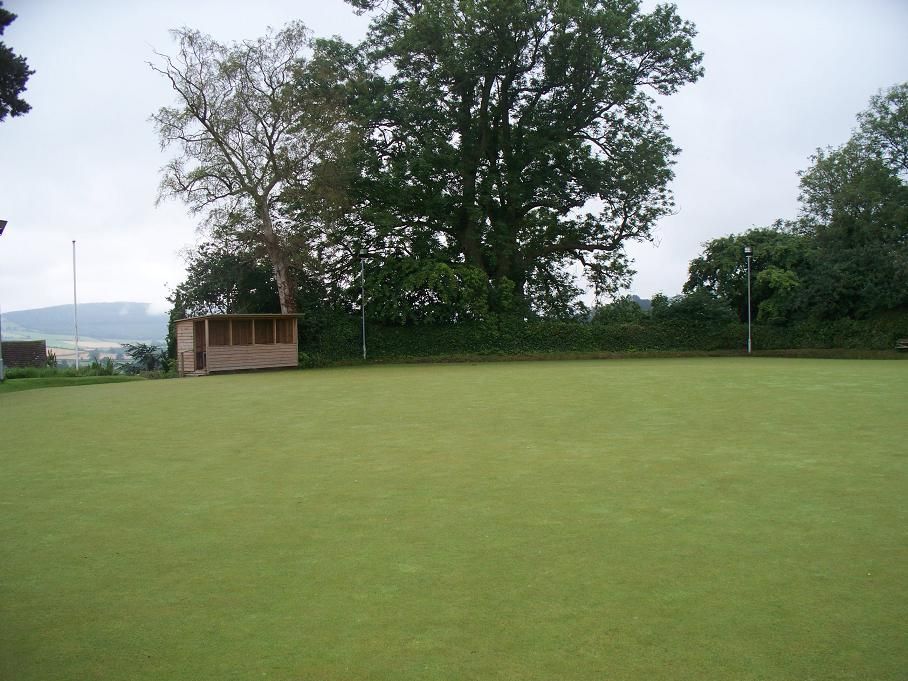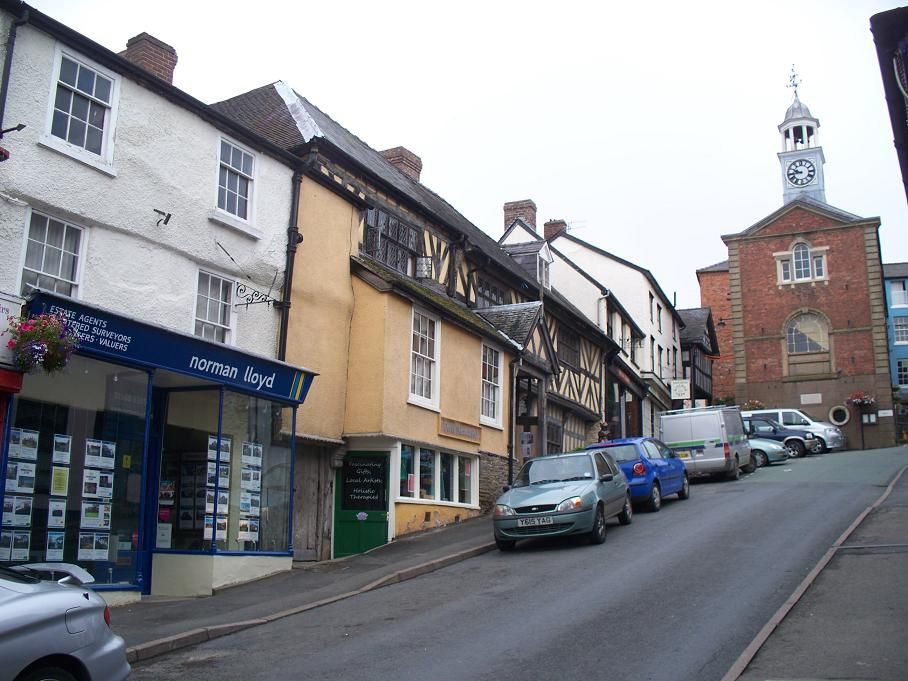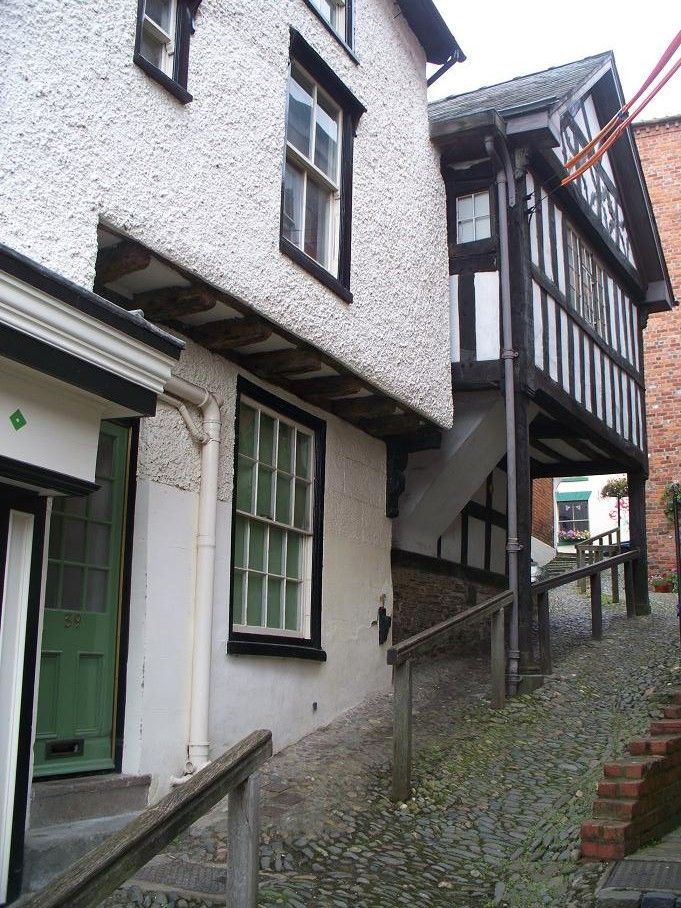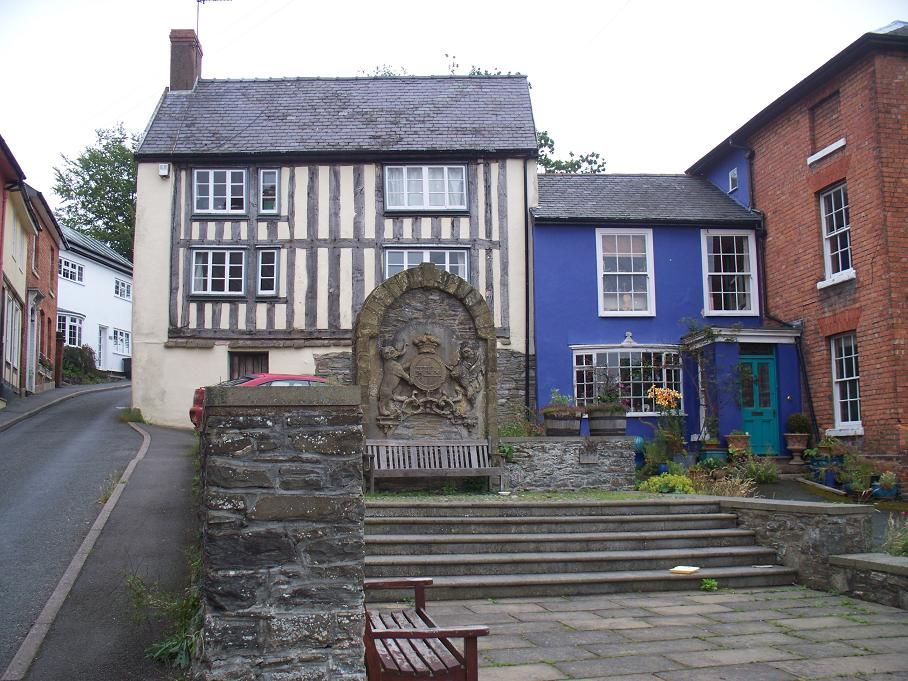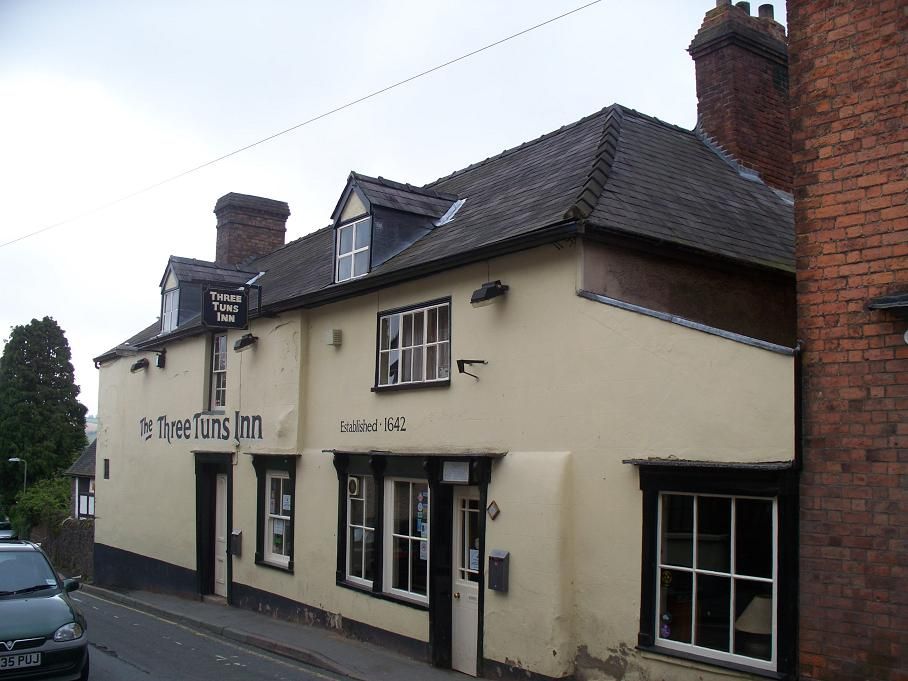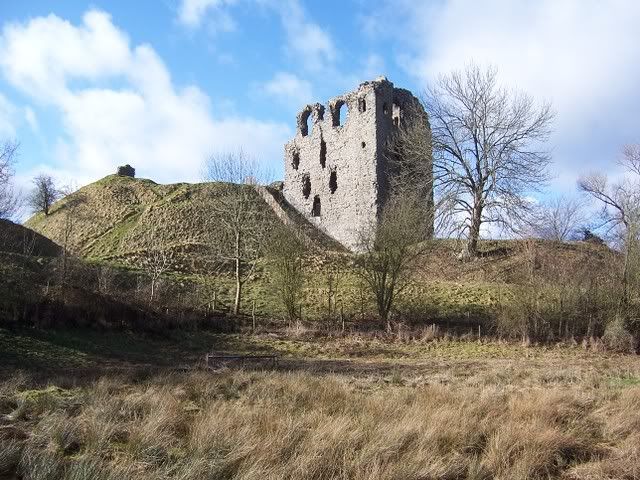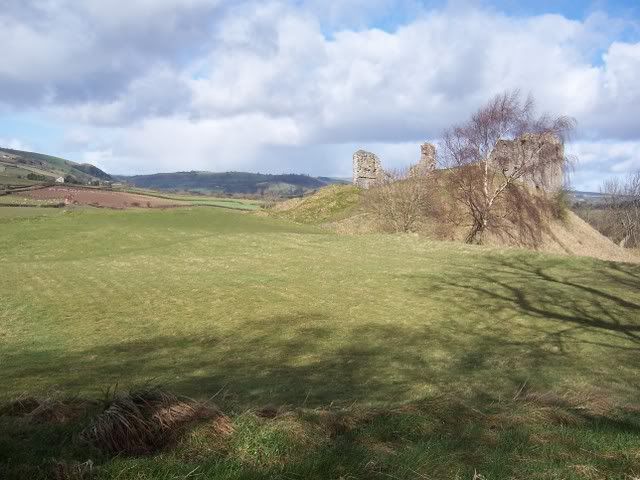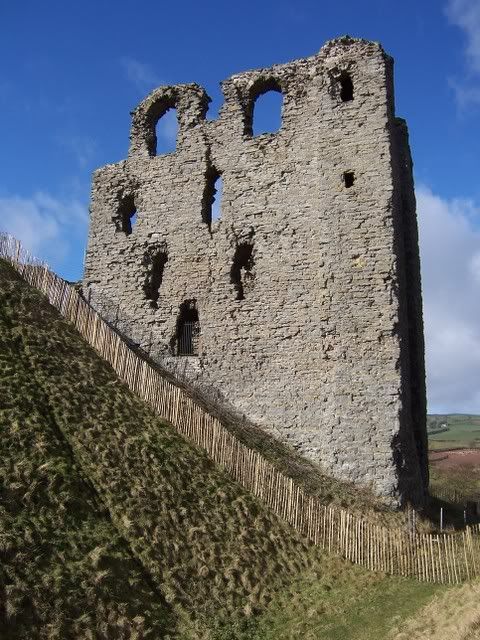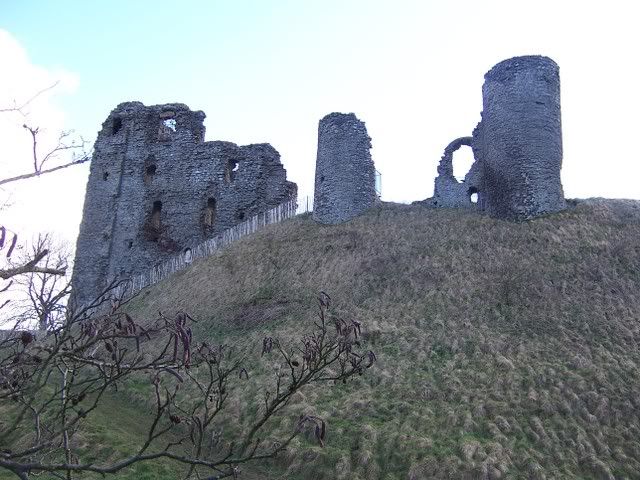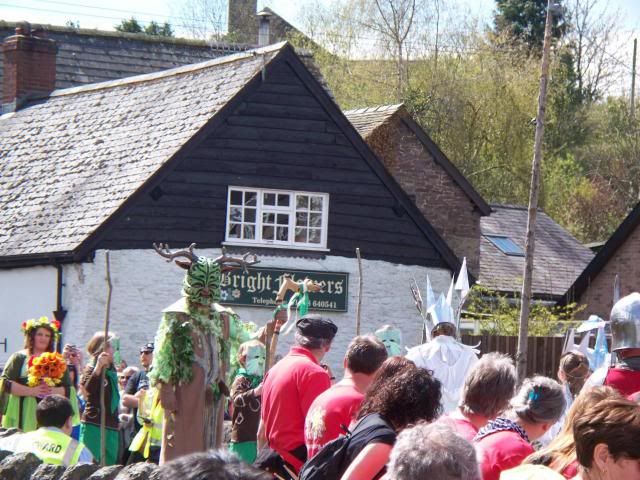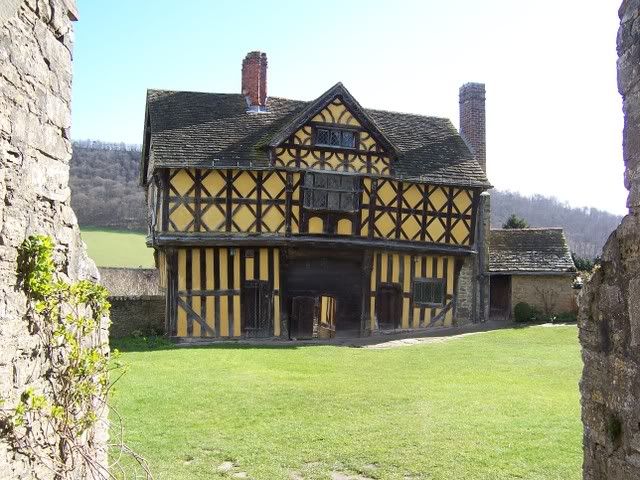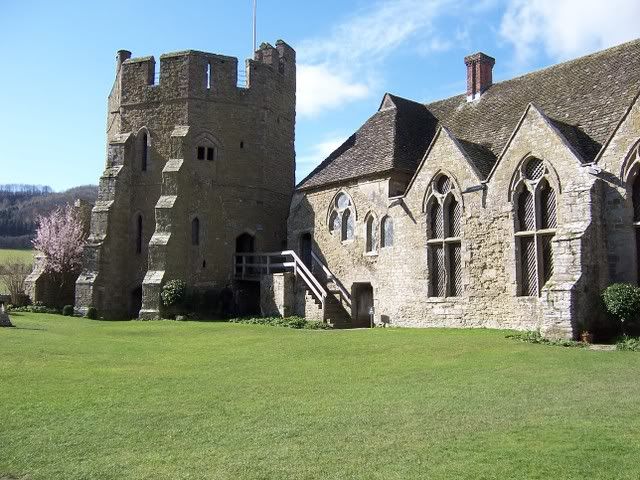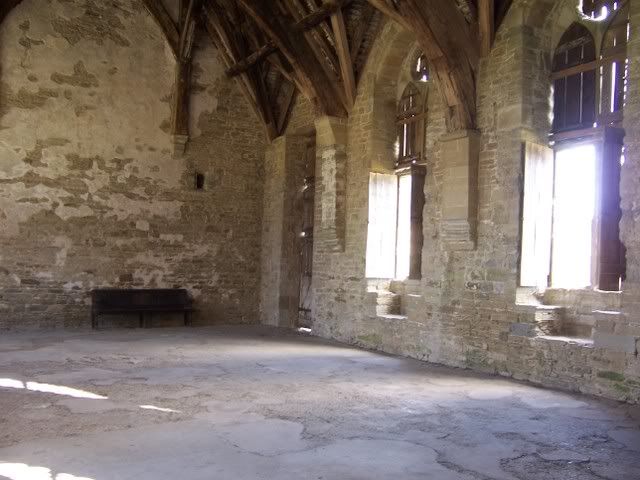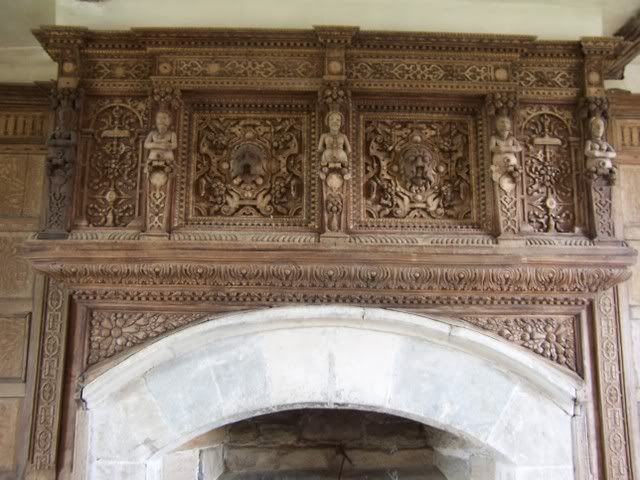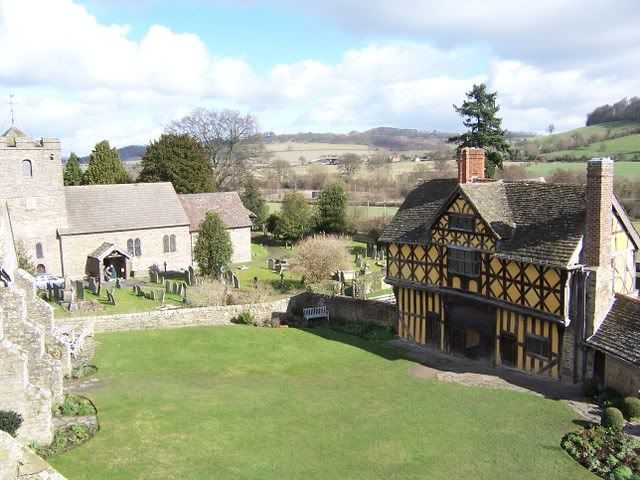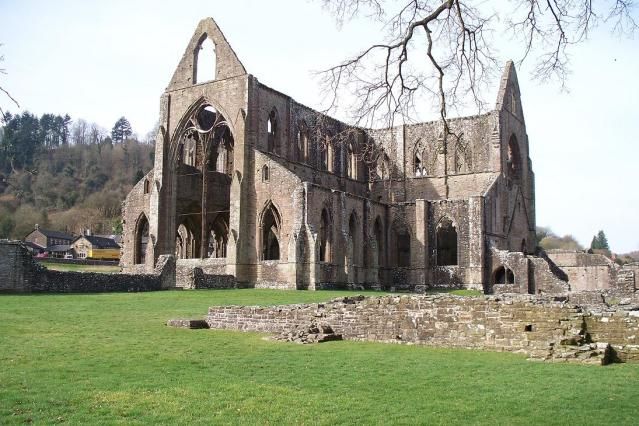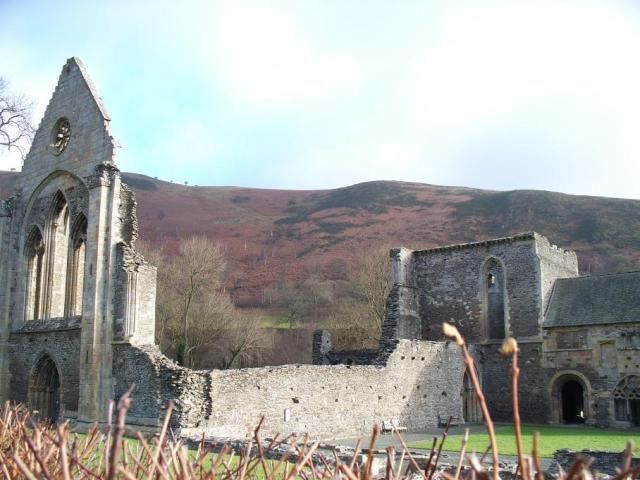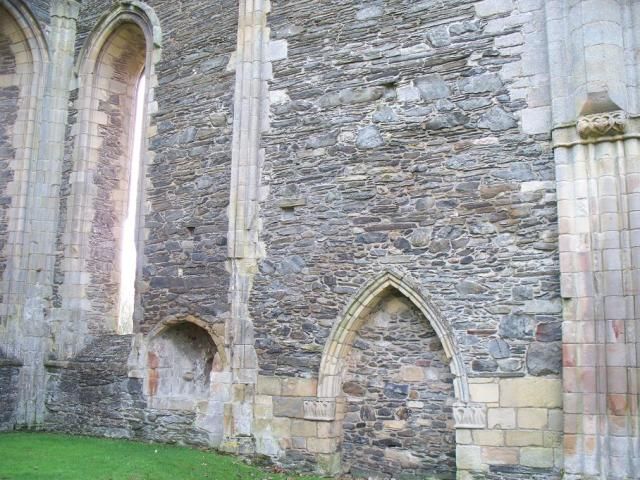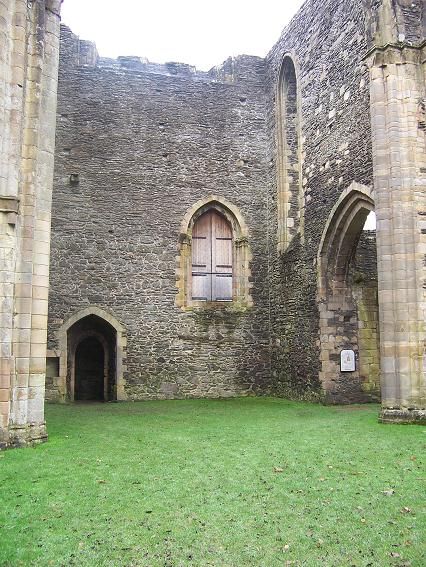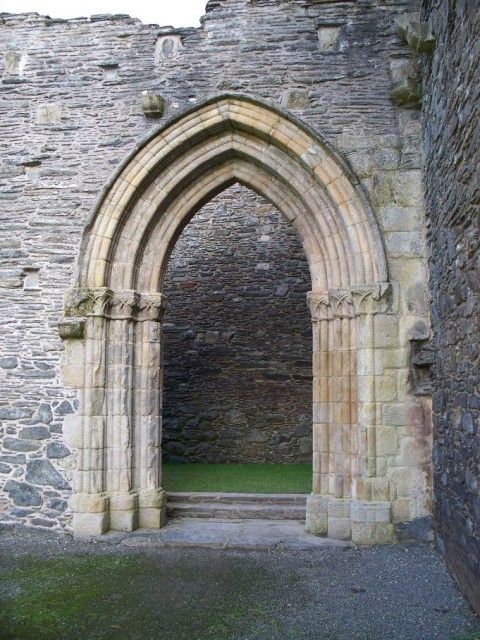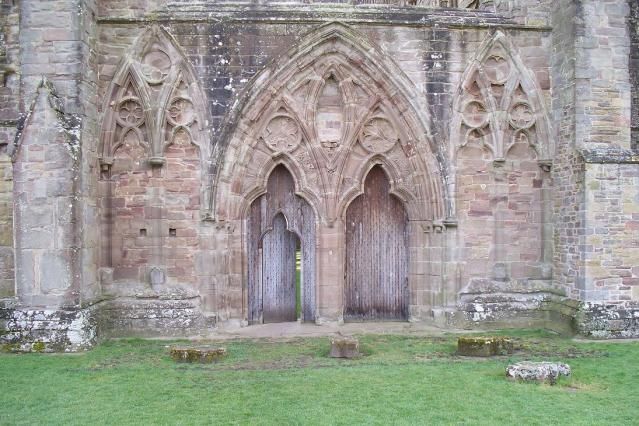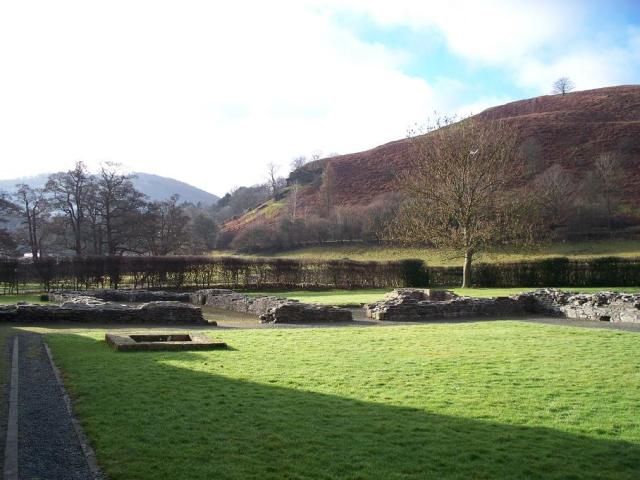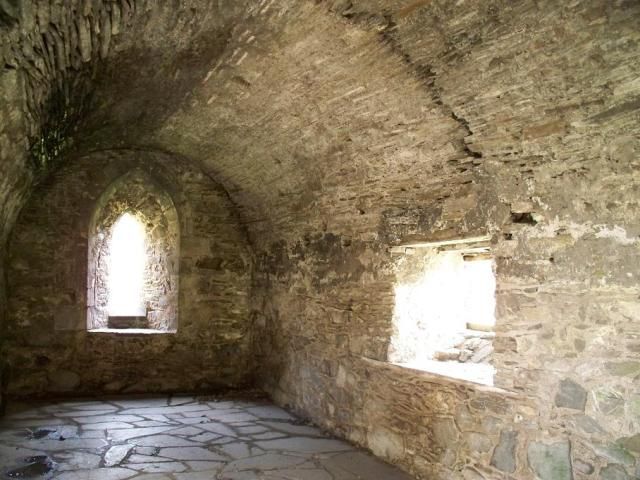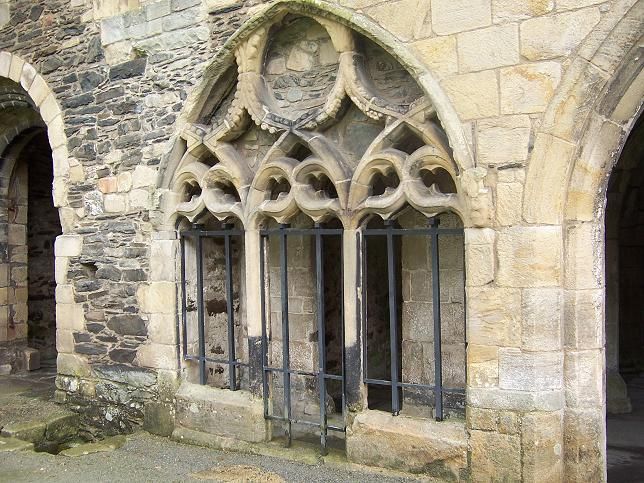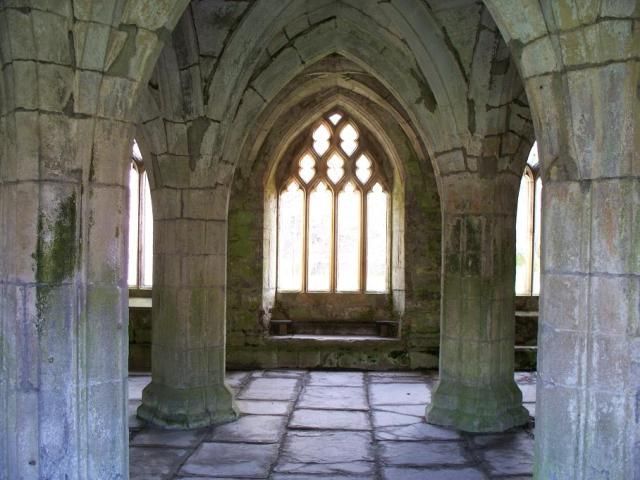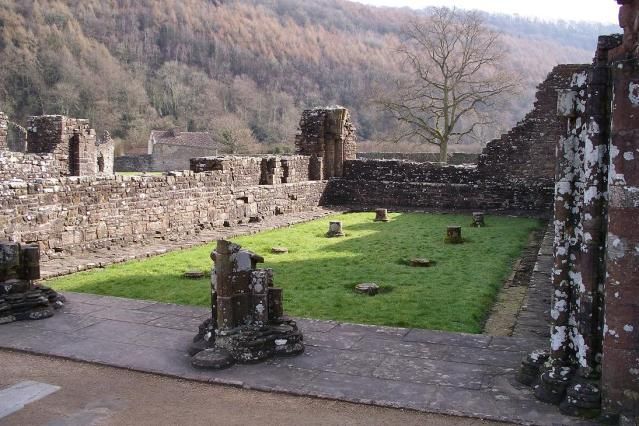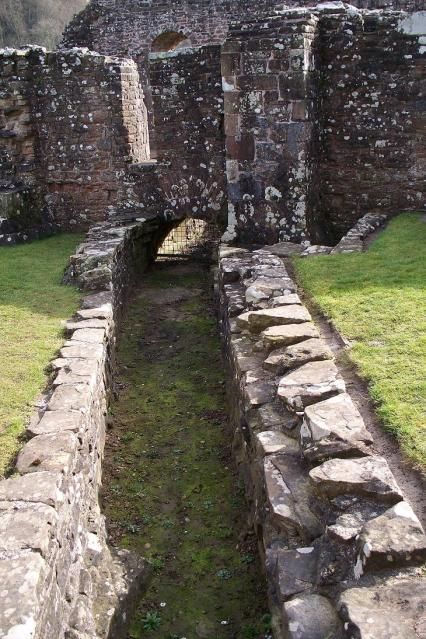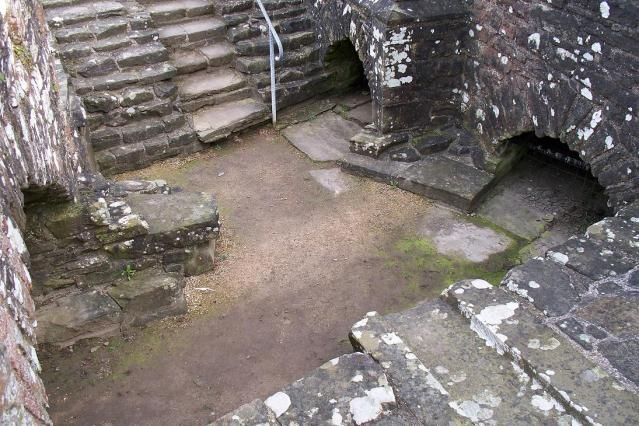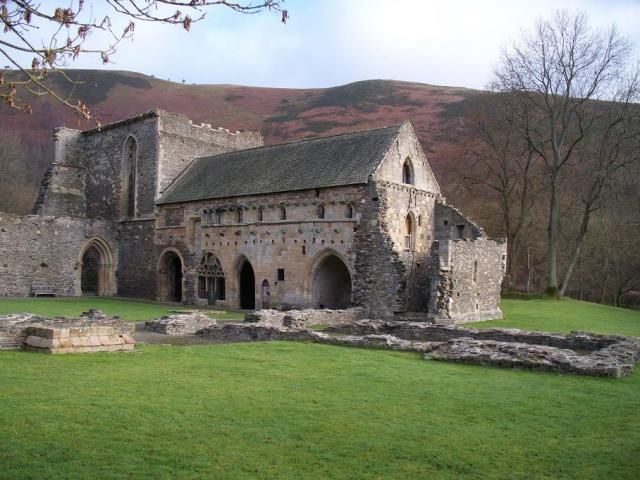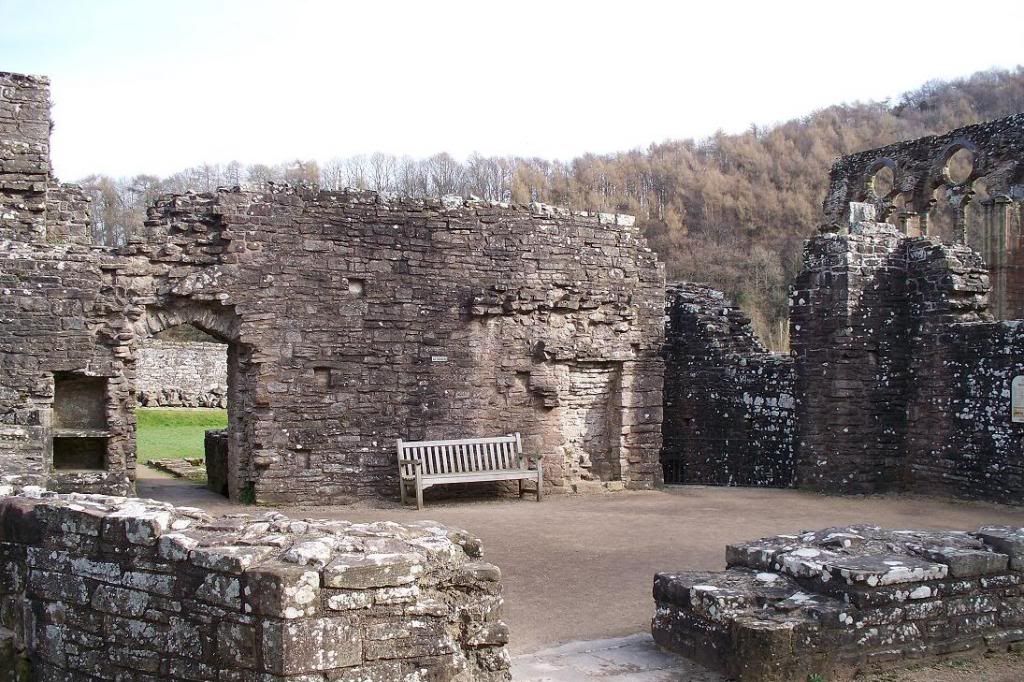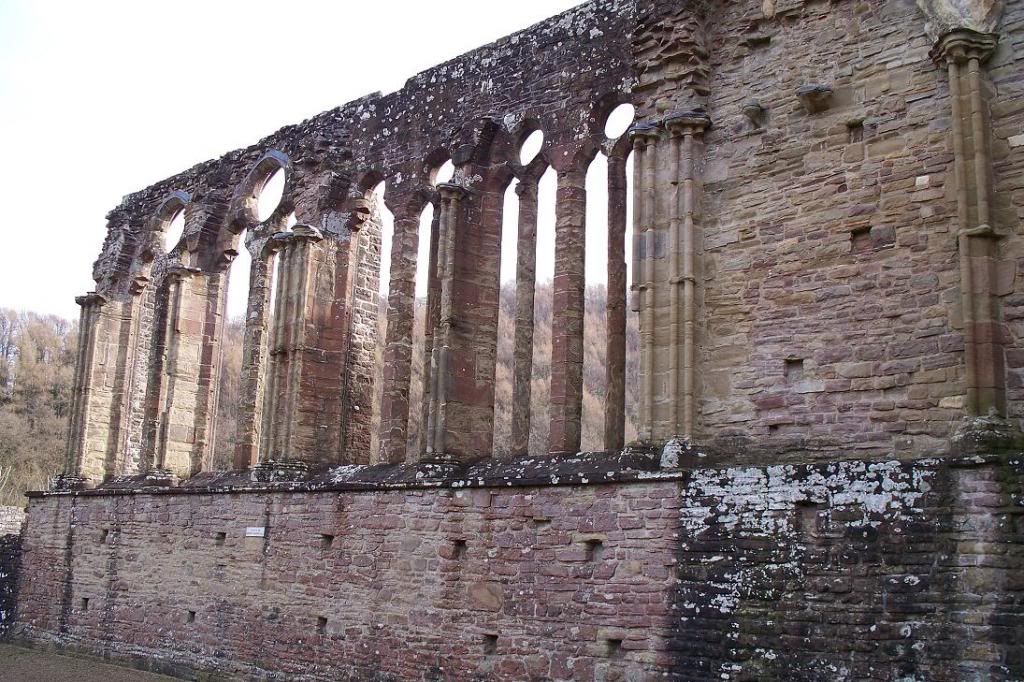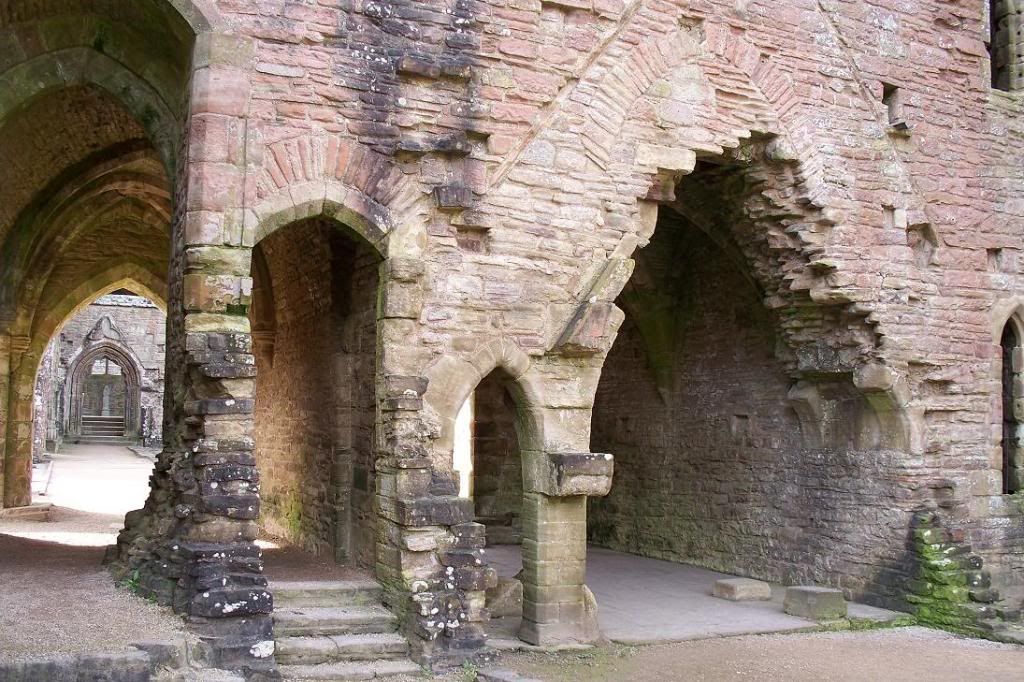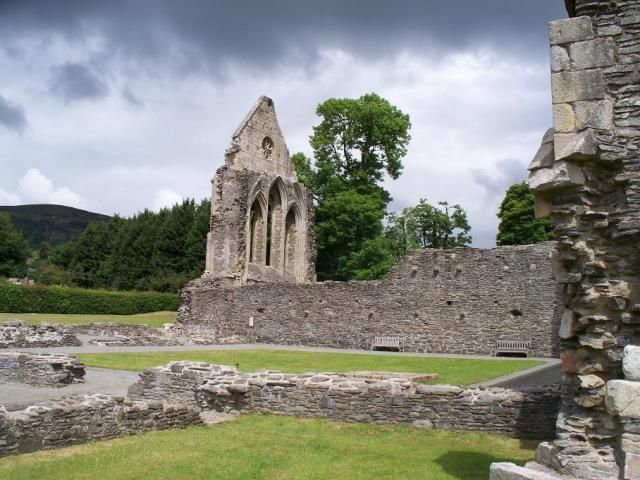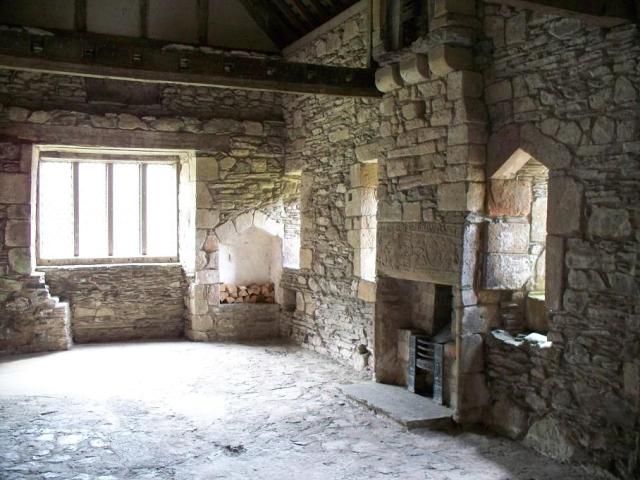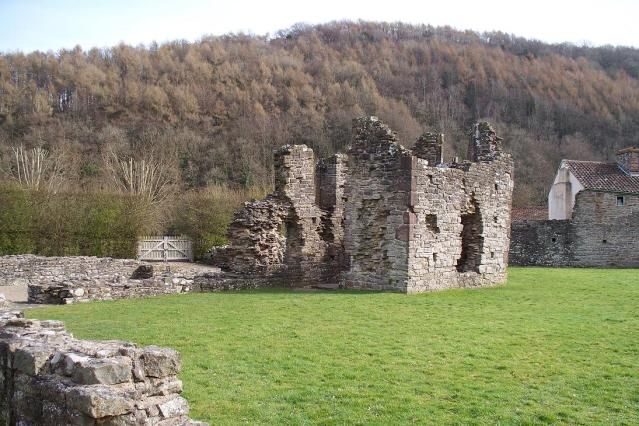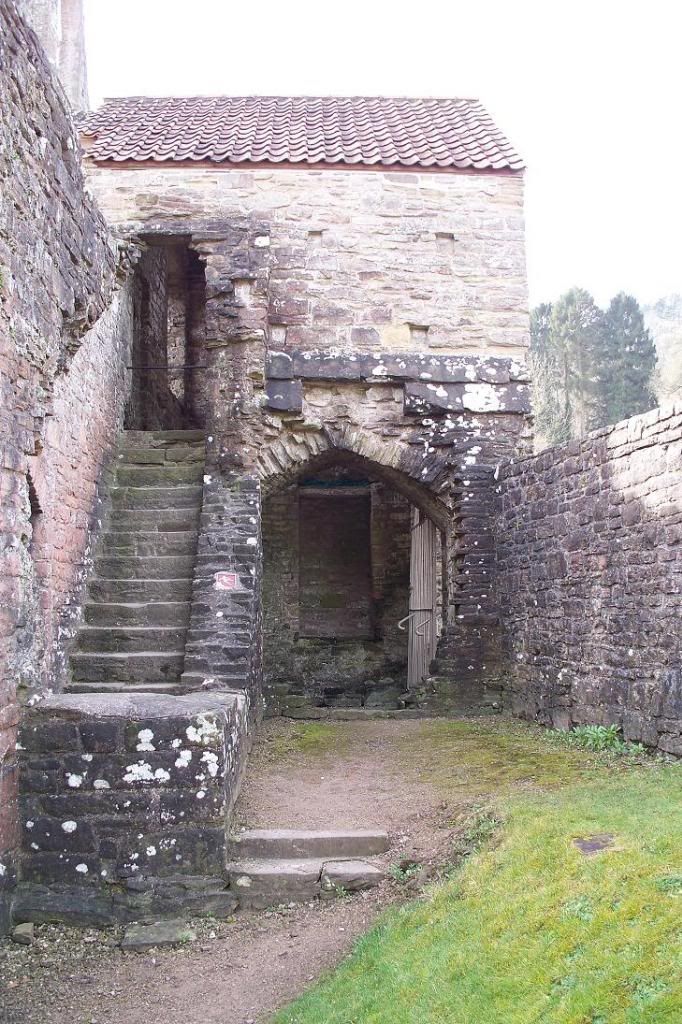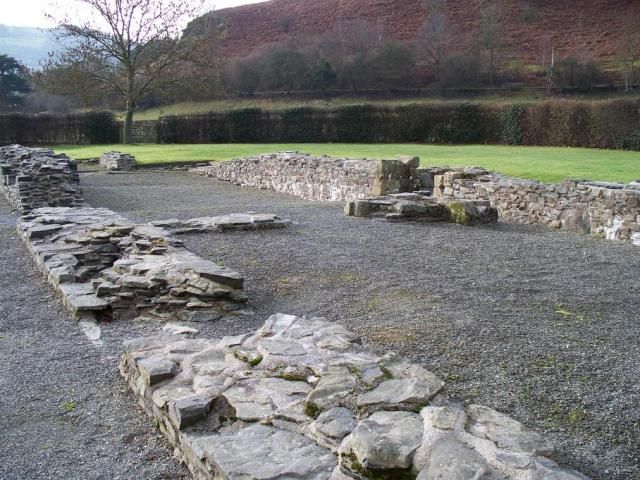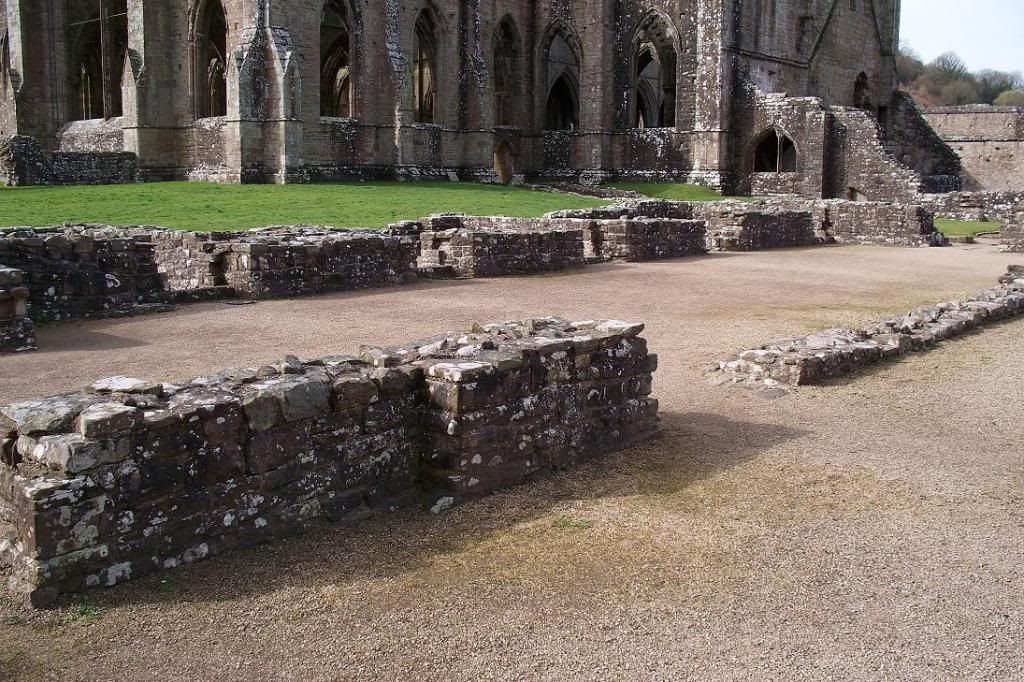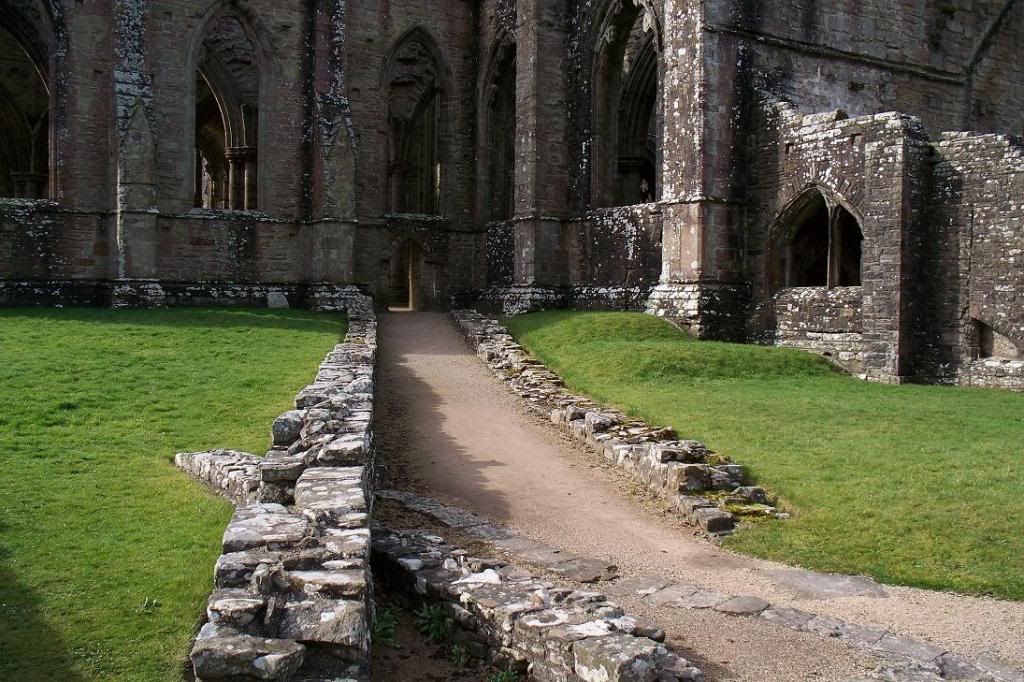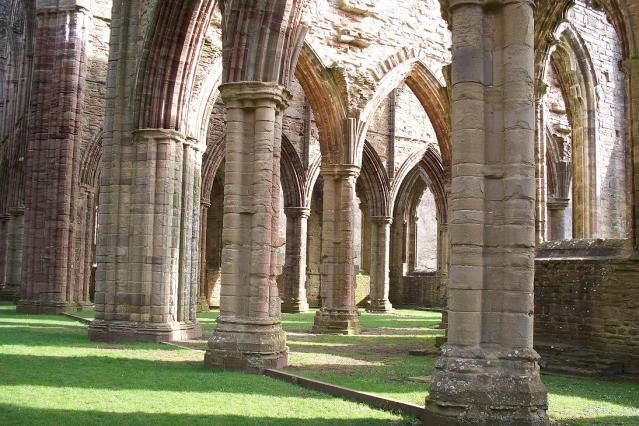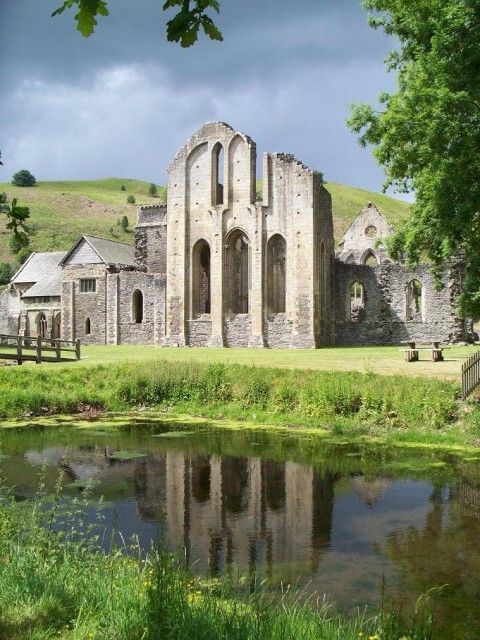To start with, I'd like to take you to the town of Montgomery, which is now in Wales but was recorded in Shropshire in Domesday Book (as 'Muntgumeri'), where a castle is mentioned in the lands of Earl Roger. This is the motte-and-bailey castle now known as Hen Domen, about a mile away from the modern town. Earl Roger, the first Earl of Shrewsbury, was of course Roger de Montgomerie, who built the castle around 1071. It didn't take long for the castle to pass to the crown, however, when Roger's son forfeited the lordship. I'll cover this in more detail when we get to Shrewsbury in a future blog. The lands were given to Baldwin de Boulers, from whose grandson (another Baldwin) the town of Montgomery gets its Welsh name - Trefaldwyn, or Baldwin's Town. Hen Domen has an interesting history, being given to the Prince of Powys by King John in an effort to forge an alliance. John, famously mistrustful of everyone, later gave it to the Prince of Gwynedd, Llewelyn ap Iorweth (the Great), who you'll remember married John's daughter Joan (as previously mentioned). However, when Henry III succeeded his father in 1216 and began the long period of tense relations with Wales that ended with the Conquest of the later thirteenth century, Hen Domen was relegated to the position of outpost for a new stone castle. Llewelyn besieged Builth in 1223, the action precipitating the building of this new castle at Montgomery.
The new castle here was built to current military fashion of a series of wards, rather than the multi-level motte-and-bailey design. With the "ward castle" (I don't know if that's the proper name, I have to admit), the whole thing is built on a strongly defensible position, usually on a high rock escarpment such as at Montgomery, so you can defend the castle as a whole, rather than falling back to a much more strongly defended keep high above your bailey. This same design is one employed by castles of the Conquest such as Conwy and Caernarfon.
^ the outer gatehouse, with the outer ward and inner gatehouse beyond.
The castle was designed to be impregnable, a border castle with a job to do - repel the Welsh. Work was begun almost immediately following the siege of Builth, and left in charge of the king's justiciar Hubert de Burgh, a seasoned veteran of siege warfare at Chinon, in France, and Dover. Llewelyn, not particularly keen on having such a man on his doorstep, attacked the nascent castle in 1228, and while he didn't stop the building work, he does appear to have "humiliated" Hubert, as the guidebook tells us. He attacked again in 1231, and again didn't do much to the castle, but did raze the town that was growing up outside.
^ inside the inner ward.
^ view of the northern edge of the town, with the Shropshire plains beyond.
Llewelyn died in 1240, and left behind him no clear, strong leader. By 1254, Montgomery Castle was completely encased in stone, and must have been a forbidding warning to any cross-border raider. However, in the 1260s, Llewelyn's grandson, another Llewelyn (known as the Last), began manoeuvres that led to the downfall of Wales as a separate entity. He set about strengthening his position as his grandfather's heir to the claim to be 'Prince of Wales', a title that was actually recognised by Henry III in 1267 in exchange for homage from Llewelyn, which was accepted. This agreement was called the Treaty of Montgomery, and was signed near to the castle.
^ the outer curtain wall.
^ the outer ditch.
However, this accord wasn't to last. Upon the death of Henry III, his son Edward I succeeded to the throne. A towering brute of a man (6ft 2in was tall for a chap of the middle ages, where average height was nearer 5ft 6in), he demanded homage of Llewelyn, who pugnaciously refused to recognise Edward's authority in his lands, a slight Edward refused to let pass. This whole subject is altogether too fascinating to gloss over here, but I promise you a further blog that will look into the Conquests of Wales very soon! Suffice it to say, Edward invaded, defeated Llewelyn, and Montgomery was an important staging area for the English troops.
Following the first stage of the Conquest in 1277, Montgomery was invested with a town wall in stone, part of which has been reconstructed to how it is presumed to have looked back in the day:
The town was established in 1223 also, and the King encouraged traders by allowing them the same freedoms within the town as they enjoyed at nearby Shrewsbury. In 1227 it was given a royal charter based on that at Hereford. Using these two cities as precedents seems to give the impression that Henry III had big intentions for Montgomery as a major town of the March.
^ the town centre today.
Unfortunately, these plans never seemed to work out. Following the Conquest, the lands in this area were given to Roger Mortimer, presumably for his sterling work during the Welsh wars. Mortimer proceeded to make the nearby castle at Dolforwyn a baronial seat, and Montgomery remained a royal castle - albeit one which, by 1310, was already showing signs of serious neglect. The Mortimers, of course, will be familiar from a previous blog. It wasn't until later in the fourteenth century that Montgomery appears to have been rejuvenated, finds from the period including lavish stained glass. During the Glyndwr Revolt of the late fourteenth-early fifteenth centuries, Montgomery Castle was garrisoned for the King. From about 1408, however, the excitement was over and a routine returned.
The Mortimer holdings were inherited by Richard, the Duke of York, in 1425, the man almost single-handedly responsible for the Wars of the Roses. The castle reverted to the Crown following Richard's forfeiture, in 1490 it was granted to Arthur, Prince of Wales (Henry VIII's brother) while he resided at Ludlow Castle. Through Arthur's Constable - Sir Charles Somerset, Lord Herbert - Montgomery Castle began its association with the Herbert family, of Raglan Castle (you know the ones, right?)
^ the inner gatehouse from the ditch.
The Grammar School at Montgomery was possibly founded in the fourteenth century. Grammar Schools were intended for the instruction of Latin, hence the name, where pupils were educated up to the age of 14, whence they would continue on into university, or else look to the Church. Following the Dissolution, the grammar school system became more widespread as a replacement for Church-funded education, until eventually the Victorians absorbed the schools into the more familiar form of school we know today, although the name was retained.
During the Dissolution of the Monasteries, Montgomery Castle was undergoing a series of renovations, and the nearby Chirbury Priory was robbed for building materials to effect these repairs. A whole host of lodgings was built in the middle ward, though by the end of the sixteenth century these were apparently in a poor state of repair once again. Early in the following century a wonderful brick Jacobean house was built in the middle ward, L-shaped and fabulous, from the sounds of it, though it was only standing for about 25 years. There is a wonderful story of the then-Lord Herbert, a chap called Edward, who had retired from the diplomatic service to live in the house, held the castle for the King during the Civil War, but refused to allow Prince Rupert to garrison it with soldiers, instead relying on his own household to do the job. You can just imagine the sort of bluff old aristocrat arming his personal servants with household implements and such! Maybe that's just me, though...
During the Civil War, the castle was besieged by Parliamentarians under the command of Sir Thomas Myddleton (of Chirk Castle), and while Lord Herbert initially tried to negotiate his way out of things, Lord Byron arrived with Royalist relief, precipitating the Battle of Montgomery on 18 September 1644 in a field below the castle ridge.
The Royalists were soundly defeated, and Lord Herbert left to live out his days in his London home, where he died in 1648. After the Parliamentarian victory the following year, the Castle was slighted, the work being financed personally by Herbert's heir Colonel Herbert as a kind of fine for his 'delinquency' in supporting the King. The brick house as well as the medieval castle were destroyed, though rather more remains of the stone than the brick - perhaps because, at this time, brick was a fashionable material and linked with the urbanity of the big city, so was more desirable for anyone looking to rob-out the remains. Anyway, whatever the reason, not much remains of the historical record following the Civil War, the castle oddly being missed off the map of the Romantic movement, even though the remains today are quite striking.
Getting firmly into Shropshire, I'd like to take you first to Bishops Castle. It's a lovely little market town in the south of the county, with some very colourful and truly wonderful survivors of the medieval age.
The name of the town comes from a castle built on top of the hill in 1087 by the Bishop of Hereford, Robert of Hereford, on lands given to the See in Saxon times. The original motte and bailey castle was rebuilt in stone starting in 1167. Many Shropshire castles were refortified during the reign of Henry II, perhaps in response to the strife between the King and the Archbishop of Canterbury, Thomas Becket, or between the King and his sons later in his reign. Either way, it was very helpful, as the area was to see increased incursions from the Welsh during the reigns of John and, later, Henry III.
^ the view across the top of the motte today.
The castle was attacked by John fitzAlan in 1281, the Earl of Arundel and Lord of nearby Clun (more in a bit), but was repaired and continued to remain a possession of the Bishop of Hereford until the seventeenth century, when it began to fall into disrepair. The castle gradually decayed until all that remains today is a fragment of wall from the outer bailey:
Around the time of the castle's deterioration, the town obtained its town hall at the top of the High Street, which was apparently also used as a prison at one point.
^ the town hall, to the right of the photo.
Near to the town hall is also the famous 15th-century 'House on Stilts', a necessity because of the steep incline the town is built upon:
Bishops Castle was once England's smallest borough, and also one of the great rotten boroughs of the eighteenth century, returning two MPs to parliament while the town only had 183 voters. I love the term rotten borough - in fact, I love the period of political reform in the UK, so I may go on a bit here! Basically, in medieval Britain, a borough was a town established by Royal charter with the right to return two MPs to parliament, or burgesses, at each election. As population centres shifted over history, these political boundaries did not, and as the eighteenth century wore on it became increasingly untenable. Old Sarum, in Wiltshire, is perhaps the most famous of all the rotton boroughs - following the foundation of the cathedral city of Salisbury nearby, Old Sarum continued to return MPs based on the medieval system, so that it would eventually wind up returning two MPs for 7 voters. The Great Reform Act of 1832 abolished all 57 rotten boroughs and redistributed the MPs more appropriate to the new industrial towns and cities. So Bishops Castle was disenfranchised in 1832, but allowed the town to retain its mayor and regalia. Um, where was I?
The town is famous for its connection to the brewing industry, having purportedly the oldest surviving working brewery in the country, the Three Tuns.
As you can see, it was established in 1642, the year the Civil War broke out. Well, all that soldiering is likely to work up a thirst. The brewery, behind the Inn and to the left, is part-Victorian, with a brick tower part that apparently makes it one of only four breweries in the UK to brew in this manner.
Onwards, and next to Clun Castle.
Clun Castle is a Norman motte-and-bailey castle with two baileys and formidable earthworks, built most likely by Picot de Say, who had received lands at Clun from Roger de Montgomerie, you know who he is by now of course. Following the Shrewsbury Rebellion of 1102 the lands were forfeited as mentioned above and Clun Castle remained connected with royalty for much of the 12th century. Briefly: Picot's daughter married Cadwgan ap Bleddyn, daughter of one of the Princes of Powys; their son Henry ap Cadwgan was possibly the same man as Henry de Say, who married one of Henry I's illegitimate daughters. Their son, Hellias de Say, was Baron of Clun during the Anarchy while King Stephen reigned. The barony was split, with Isabella de Say receiving the castle. In 1199 the castle was passed to her son William FitzAlan, of the mighty Shropshire family.
Back just over the border in Powys is Colwyn Castle, which was confused for Clun during the middle ages as the Welsh name for the English village of Clun is "Colunwy". Colwyn Castle, it should be mentioned, has no relationship to the town of Colwyn Bay up on the North Wales coast. Lord Rhys (remember him?), on one of his final campaigns, sacked and razed
Colwyn Castle, an event that has forever become confused with Clun's
history. In 1215 John FitzAlan rebelled against King John, causing the
castle to again be attacked. William FitzAlan was with Richard I when he built
Chateau-Gaillard in Normandy and possibly rebuilt the castle as a reflection of
the royal castle there.
^ the River Clun, which gives the village its name, sweeps past the bailey.
Clun became the principal residence of
the FitzAlans during the thirteenth and fourteenth centuries, successfully
seeing off an attack from Llywelyn the Great in 1233, who nevertheless
successfully captured Shrewsbury the following year. Anyway!
Clun came under the power of Roger
Mortimer of nearby Wigmore Castle, which has also been mentioned in a previous blog. Edward I stayed here in 1295, on his
way back from a second tour of his Welsh works. The FitzAlans were very well
connected with the monarchy and, in 1370, Edward III loaned 10,000 marks from
the family. When the FitzAlans became Earls of Arundel as well, Clun Castle was
used as more of a hunting lodge, keeping the Earl's stud. Quite the history, wouldn't you agree? Well, it wasn't to last. Owain Glyndwr helped to bring about the
end of this prosperity of the castle during his years of rebellion against Henry IV. By 1539 it was described as
"somewhat ruinous" and wasn't used during the Civil War. Tourism
became it's sole draw, despite the FitzAlans owning it until 1677. In 1894 the
Duke of Norfolk (in English Peerage, the Premier Duke), Henry FitzAlan-Howard
bought the castle ruins and, while it is still part of their estates, it is now
owned by English Heritage (and is a great free day out!)
Today the village of Clun is also famous for its Green Man festival which has taken place over the May Bank Holiday every year since 1999. A symbolic festival demarcating the passage of the seasons, the Green Man enters the village and battles the Spirit of Winter on the packhorse bridge:
The Green Man is a pagan symbol of rebirth that, curiously, often finds his way into church architecture, possibly as a rebellious folkloric element, and possibly as a reflection that the early Christian missionary church adopting many pagan beliefs into its own doctrine in an effort to ease the conversion. Green Men abound in Arts & Crafts architecture, where there is almost a desire to regress back to a more primitive English style, and there has been a recent resurgence of use of the motif in modern art, where all kinds of stylistic identities are raped in the name of modernity. Neopaganism, too, makes use of the Green Man as a metaphor for personal enlightenment.
Not far from Clun is the town of Craven Arms, where we find our next castle, Stokesay Castle!
Stokesay is a fortified manor house and one of the most instantly-recognisable buildings in the county. Post-Conquest, Stokesay (or Stoches)
was granted to Roger de Lacy, who also had manors at Stanton Lacy and
Ludlow. The castle isn't mentioned in Doomsday but a mill and apiary are, with land for 14 ploughs (5 of which were held in demesne, or worked on behalf of the lord.
Stokesay was regranted to Theodoric de Say in 1115 as the tenant of the de
Lacys, at a place then called "South Stoke". Hence, Stoke and Say.
The manor was under contract to be
lived in from Henry III, to counter raids from the Welsh. It is probably around
this time that building of the "castle" began - it was certainly
completed around the time Edward I instigated the license to crenellate in 1291
(not a license to crenellate as such, but more a license to build a
fortification, the idea being it would only be granted to the king's allies,
who wouldn't use their fortifications against him).
The house was sold in 1281 to Lawrence
of Ludlow for "a juvenile sparrow hawk", obviously a decent price
back in the day. Lawrence was a wool merchant, making most of his profit from
the Low Countries, which according to the guidebook had an insatiable appetite
for English wool. Lawrence was also a creditor to the King, as well as the
Earls of Arundel and the Mortimers of Wigmore, kind of goes one step ahead of
the FitzAlans, doesn't it?
^ the gatehouse, one of the most famous buildings in English history.
Lawrence became something of a neuveau
riche, investing his money in local land. He obtained a Charter of Free Warren
(hunting rights) from the king in 1281, and extended the manor's grazing rights
in 1288. By the time of his son's death in 1316 the manor comprised 200 acres,
over which were spread a dovecote, two mills and a wood.
The Ludlows continued their trade
through the fourteenth and fifteenth centuries, and it wasn't until 1598 when
the manor house had to be sold to clear the debts of Henry Vernon, who had
married Anne Ludlow. It was sold to Sir George Mainwaring for £6000. It was sold
again in 1620 to the Craven family for £13,500. The gatehouse was built in the
1640s by the Cravens' tennant Charles Baldwyn, MP for Ludlow. He was later
fined by Parliament for "delinquency", ie supporting the King during
the Civil War.
It was during the civil war that
Stokesay saw its one and only military encounter - 1645 saw the castle sieged
by parliament on their way to Ludlow Castle. All that happened following the
castle's capitulation was the demolition of the curtain walls. Charles' son
Samuel Baldwyn, also MP for Ludlow, flourished during the Restoration as a
lawyer. On his death he was assessed as having 17 chimneys eligible for hearth
tax (that is, one shilling for every chimney a taxpayer has - it was instigated
by Charles II and repealed within about 20 years).
^ the hall.
Following Samuel's son Charles dying in
1706, the castle stopped being occupied. The castle became part of the nearby
farm and was used as such for a hundred and fifty years. The castle buildings
were bought in 1869 in an effort to preserve them for the future, which has
been going on since.
^ the solar, and its impressive overmantel.
Its an impressive survivor of the
middle ages, and is very nice to wander around and stuff. The only problem is
that it's quite popular, despite being fairly out-of-the-way off the main road
from Ludlow to Shrewsbury. English Heritage seem to use it as the face of their
Midlands things, though, so you're not really alone to wander about and all the
rest of it. It is a fantastic little site though, and a very flavoursome example of medieval England!

